
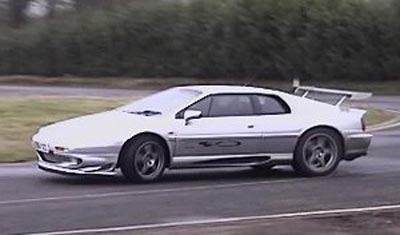
Lotus Esprit Sport 350
FOREVER YOUNG
Close to a quarter of a century old, in automotive terms the Lotus Esprit is a granddad. If it were human, it would have collected its bus pass and be driving off into the sunset. But life isn't quite like that, and as the Esprit gets older, it seems to get funkier, each makeover leaving it smoother and sleeker, with even bigger wings and spoilers.
The latest incarnation, the Sport 350 is the greatest raver of the lot. It has eaten a bowl of aluminum and carbon fibre for breakfast and donned a silver jogging suit for a serious workout. Developed as a result of discussions with customers at the 1997 London Motor Show, the Sport 350 is a response to burgeoning speed limits on public roads. More and more owners now exercise their cars on race tracks, and exploring the performance envelopes of their cars has whetted their collective appetites for a car even closer to race spec, but still civilised enough to use on a daily basis.
The limited edition Sport 350 has had 80kg of extraneous weight - air-conditioning, airbags and luxury gadgets - stripped out and its underpinnings adapted for life as a 'run what you brung' fun car. It is aimed at 50 people who take their track days and club racing seriously. Lotus' founder, Colin Chapman, always said 'For speed add lightness', and the Sport 350 is the epitome of this concept.
You will never mistake the Sport 350 for any other Esprit. Silver and blue are its flying colours. Available only in what Lotus describe as 'New Aluminium', details like the air scoops, brake calipers, cam cover and the Alcantara seat inserts are coloured blue.
The cabin treatment also underlines the minimalist approach. Visible carbon fibre is in the dashboard and console, while aluminum is used for the dashboard, gearknob, gear gaiter surround, drilled pedals and footrest. You connect with the car via a delightful Momo sports steering wheel and lightweight but very supportive bucket seats draped in black leather and blue Alcantara.
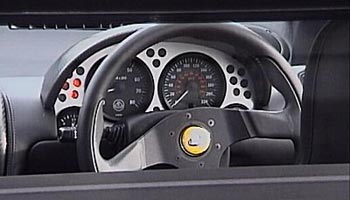
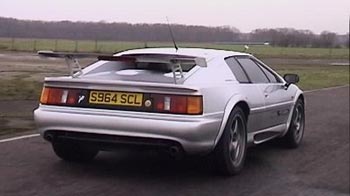
Around 20kg was shaved from the body weight by reverting to a similar 'hand laid' system as used on the Sport 300 five years ago. It takes much more time and costs more than the VARI (Vacuum Assisted Resin Injection) process used to mould the standard Esprit bodies, but the weight saving is worthwhile.
Race style front and rear aerodynamic additions leave nothing to the imagination. The air splitter protruding from the front valence provides downforce at speed while the distinctive rear wing was developed from the one used on the Lotus Type 115 racer. Its aerofoil section is carbon fibre and the side fins and upright supports are made from milled aluminum. The other distinguishing mark is the grey painted magnesium OZ Racing alloys. 8.5J X 18 and 10J x 18-inch and shod with 235/40ZR18 and 295/35ZR18 rubber, each wheel and tyre assembly saves a significant 3kg.
The almost annual updates that Lotus have wrought on the chassis since the early '90s always leave us feeling that things could not get much better. But each time we have been pleasantly surprised. The latest round of suspension changes give the Sport 350 a different feel yet again. In most ways it is better, in just one it is worse.
The torsional stiffness of the chassis at the rear of the car was increased by a whopping 45 percent, achieved within the engine bay area. Eibach springs, uprated 40 percent in front and 20 percent at the rear, work with hand-made Monroe dampers specifically tuned for optimum road/track work. These dampers are physically larger than the standard Esprit V8 units and hold more oil. The front anti-roll bar diameter is increased by 1mm to 17mm. This and subtle geometry changes allow you To go deeper into bends than ever before. Trail braking into bends, a favourite race drivers technique, now feels more stable and less likely to end in tears if you overdo it.
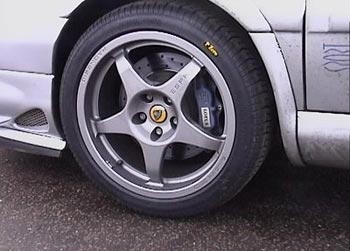
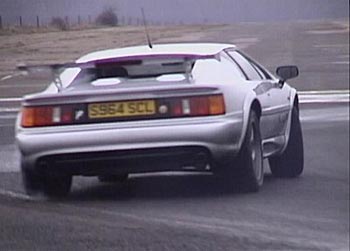
On the face of it, the stiffening process should have corrupted the Esprit's cross country comfort out of hand. In fact, on the less than perfect country lanes around the Lotus factory, we were amazed to find a ride no more jittery than many modified hot hatches or lowered BMW M3s. The ride is firm, but it is not unyielding and most importantly, it always keeps the tyres in touch with terra firma.
The only downside seems to be a more distinct tug on the wheel when you are braking on bumpy surfaces. The greater negative camber and toe changes which give the car its sharper turn-in and more incisive front end grip have made the path of the front wheels more sensitive to uneven road surfaces.
On the track, it is simply magnificent. Turn-in is crisper, the information coming back through the excellent power steering, while good before is now almost telepathic and the seat-of-the-pants feel of the whole car has also been raised a level. Blasting around Hethel, the old airfield perimeter road turned test track next to the Lotus factory, we soon discovered just how good the new game is.
If there is one thing Lotus is good at it is chassis engineering. The Esprit V8 is arguably the best balanced mid-engined supercar around. In a handling head-to-head with the Ferrari F355, the Lotus will win, the dialogue through the helm even sharper, and its tail easier to catch when those fat rear tyres eventually relinquish their grip. With a bit of practice, a halfway decent driver can power slide the Esprit convincingly at moderate speeds. In Sport 350 form, controllability on the ragged edge is even better than before. Now more connected with its driver than ever, it is more communicative and more responsive to inputs.
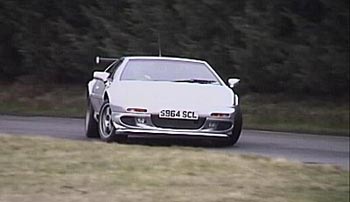
Big 320mm two-piece, vented and cross-drilled AP Racing discs and four-pot calipers are linked to the latest Kelsey-Hayes ABS system to provide phenomenal and consistent stopping power. The two-piece alloy bells and calipers in themselves save 1kg per corner. This uprated system does not actually retard the car any faster, but with Ferodo DS 3432 pads, guarantees fade free track performance. In practice, the brakes are phenomenal. The stock Esprit V8 brakes never gave cause for complaint, but the Sport 350 system seems immune to fade.
On paper, the Sport 350 appears to use the standard Esprit V8 motor with 349bhp at 6,500rpm and 295 lb ft (400Nm) of torque at 4,250rpm. But while the big numbers remain unchanged, the shape of the power and torque curves have been massaged for better mid-range performance.
With less weight to carry, each horse and each twist of the crankshaft is more telling. 60mph from rest now comes up in a gut wrenching 4.3 sec but you have to be fairly brutal with the clutch to overcome the mechanical grip of the fat 295/35ZR18 Michelins. 5.7 sec later, the 100mph marker falls and if you have a long enough straight, you will see 172mph. That is some 10mph slower than the Ferrari F355, but top speed is academic these days, and also irrelevant on any race track apart from Le Mans.
The Sport 350 is the hardest charging and most focused Esprit ever. It is blindingly fast, phenomenal in the bends and stops on the proverbial dime. By the same token, it requires more driver focus and commitment than any Esprit that has gone before. But if you are prepared to make the effort, it also rewards like no other.
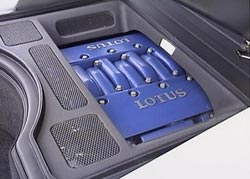
|
|